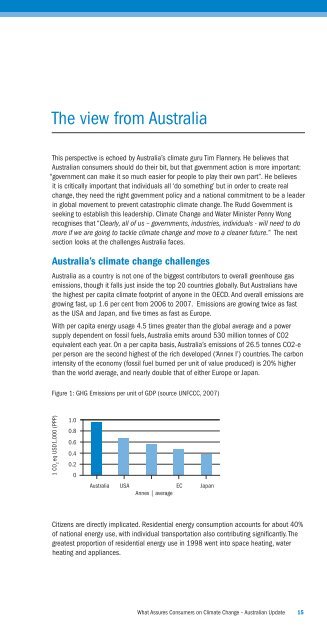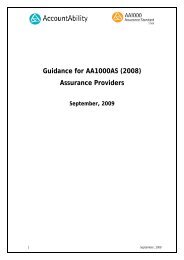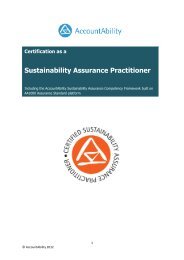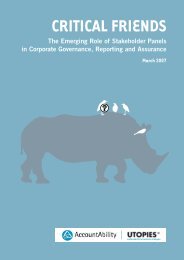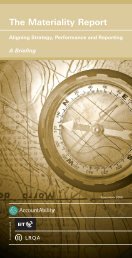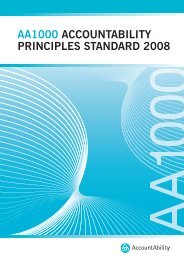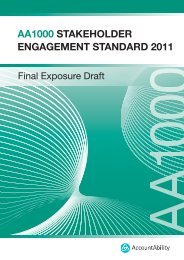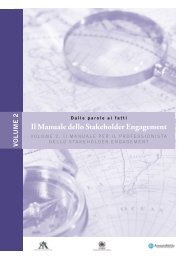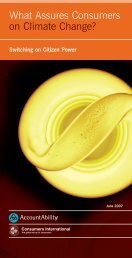Free Download - AccountAbility
Free Download - AccountAbility
Free Download - AccountAbility
- No tags were found...
You also want an ePaper? Increase the reach of your titles
YUMPU automatically turns print PDFs into web optimized ePapers that Google loves.
The view from AustraliaThis perspective is echoed by Australia’s climate guru Tim Flannery. He believes thatAustralian consumers should do their bit, but that government action is more important:“government can make it so much easier for people to play their own part”. He believesit is critically important that individuals all ‘do something’ but in order to create realchange, they need the right government policy and a national commitment to be a leaderin global movement to prevent catastrophic climate change. The Rudd Government isseeking to establish this leadership. Climate Change and Water Minister Penny Wongrecognises that “Clearly, all of us – governments, industries, individuals - will need to domore if we are going to tackle climate change and move to a cleaner future.” The nextsection looks at the challenges Australia faces.Australia’s climate change challengesAustralia as a country is not one of the biggest contributors to overall greenhouse gasemissions, though it falls just inside the top 20 countries globally. But Australians havethe highest per capita climate footprint of anyone in the OECD. And overall emissions aregrowing fast, up 1.6 per cent from 2006 to 2007. Emissions are growing twice as fastas the USA and Japan, and fi ve times as fast as Europe.With per capita energy usage 4.5 times greater than the global average and a powersupply dependent on fossil fuels, Australia emits around 530 million tonnes of CO2equivalent each year. On a per capita basis, Australia’s emissions of 26.5 tonnes CO2-eper person are the second highest of the rich developed (‘Annex I’) countries. The carbonintensity of the economy (fossil fuel burned per unit of value produced) is 20% higherthan the world average, and nearly double that of either Europe or Japan.Figure 1: GHG Emissions per unit of GDP (source UNFCCC, 2007)1 CO 2eq USD1,000 (PPP)1.00.80.60.40.20AustraliaUSAAnnex | averageECJapanCitizens are directly implicated. Residential energy consumption accounts for about 40%of national energy use, with individual transportation also contributing signifi cantly. Thegreatest proportion of residential energy use in 1998 went into space heating, waterheating and appliances.What Assures Consumers on Climate Change – Australian Update 15


